Welcome to Cusco. Home to the ancient Inca Empire, Cusco is a city full of culture, history, and wildlife. Among the wildlife, birds are particularly abundant and can be seen flying and nesting around the city.
These birds, from the colorful parakeets to the majestic Andean condor, add charm and character to the cityscape. With over 600 species of birds, Cusco is a birding paradise and a great place for birders to explore.
From the high altitudes of the Andes to the lowlands of the Amazon, Cusco has something to offer for all types of birders. So come explore and discover the birds of Cusco!.
1. Puna Ibis
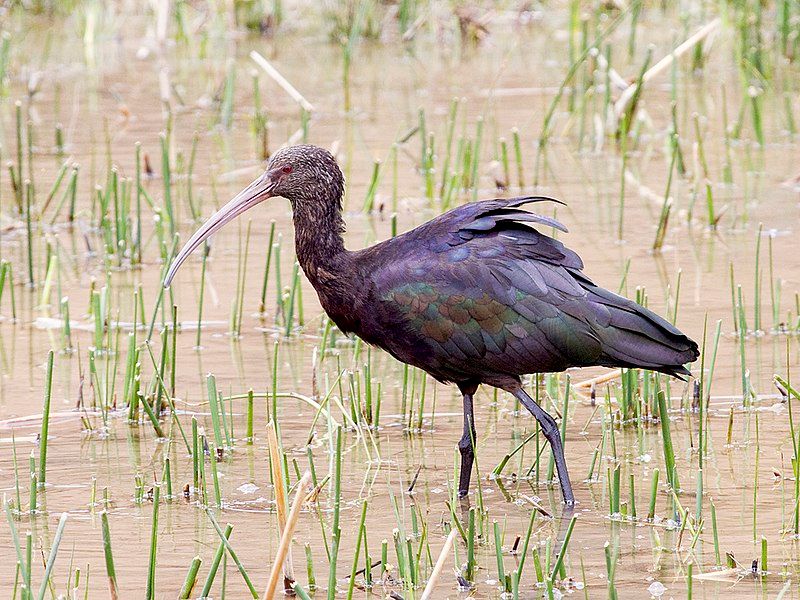
The Puna ibis is a species of bird belonging to the family Threskiornithidae. It is a species that is commonly found in South American countries, such as Argentina, Bolivia, Chile, and Peru.
Its natural habitats are typically swamps, marshes, and lakes, and it has a range mainly found in the Andean highlands, also known as the Puna.
However, it can be found locally at sea level in some areas. The Puna ibis has a distinct appearance, with a grayish-white body and a black crown, face, and neck. Its wings and long legs are black too, and its bill is curved and a pinkish-red color.
The Puna ibis is usually seen foraging in wetlands, such as marshes, swamps, and shallow ponds.
Its diet consists of aquatic invertebrates, small fish, and amphibians. The Puna ibis is considered to be a vulnerable species, due to the destruction of its habitat and the illegal hunting of the species for food and feathers.
Conservation efforts are needed to protect this species and its habitats. Such efforts include the creation of protected areas and the implementation of laws that prohibit hunting and habitat destruction.
By taking these measures, we can ensure that the Puna ibis and its habitats will be protected for future generations.
| Kingdom | Animalia |
| Phylum | Chordata |
| Class | Aves |
| Order | Pelecaniformes |
| Family | Threskiornithidae |
| Genus | Plegadis |
| Species | P. ridgwayi |
2. Andean Flicker
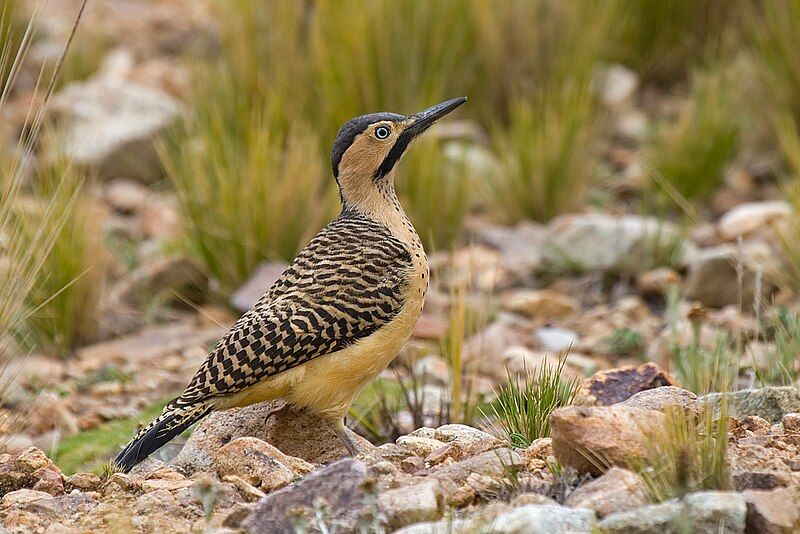
The Andean flicker is a species of bird in the woodpecker family Picidae. It belongs to the subfamily Picinae, which is composed of various species of woodpeckers. The Andean flicker is found in the countries of Argentina, Bolivia, Chile, Ecuador, and Peru.
It is a fairly large bird, with a length of up to 27 centimeters and a wingspan of up to 51 centimeters. The upperparts are predominantly greyish-brown with a blackish crown, while the lowerparts are barred with black and white.
The bill and legs are black, while the eyes are dark red. The Andean flicker feeds primarily on insects, but also eats fruits, nuts, and berries. It inhabits open woodlands, savannas, and grasslands, often near human settlements.
It is a fairly common species, although it is listed as vulnerable due to habitat loss.
| Kingdom | Animalia |
| Phylum | Chordata |
| Class | Aves |
| Order | Piciformes |
| Family | Picidae |
| Genus | Colaptes |
| Species | C. rupicola |
3. Mountain Caracara
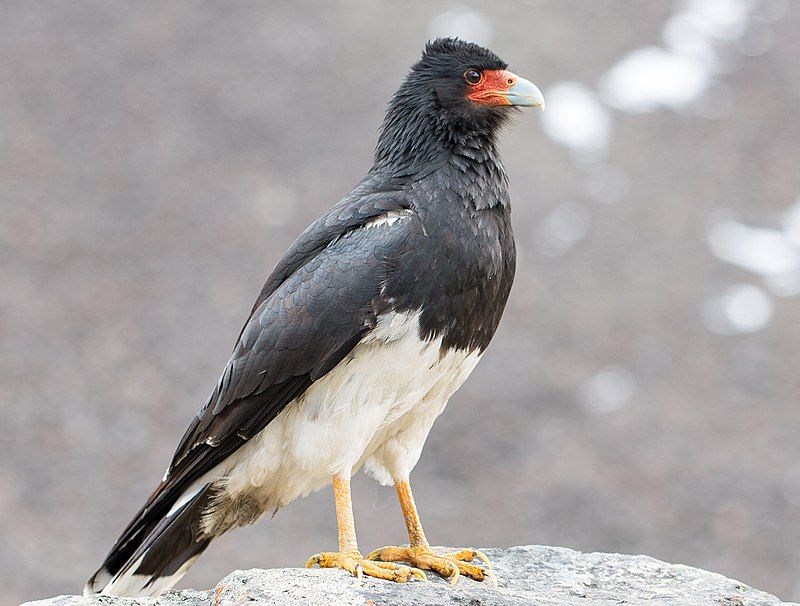
The mountain caracara is a species of bird of prey that is found in the Andes mountain range. It is found in puna and páramo ecosystems, or high altitude grasslands and shrublands.
The range of the mountain caracara stretches from northern Ecuador, through Peru and Bolivia, to northern Argentina and Chile. The bird is considered to be fairly uncommon, but it is still seen in the region fairly often.
It is particularly adept at scavenging for food, which is why it can survive in such a harsh environment.
The mountain caracara is a member of the Falconidae family, which is a group of birds of prey that includes some of the world’s most recognizable species, such as falcons, eagles, and hawks.
The mountain caracara is known for its distinctive appearance, including its yellow head and white and black body. It also has a long tail and a curved bill.
The mountain caracara is an important species in the region, as it helps maintain the balance of the ecosystems in which it lives.
| Kingdom | Animalia |
| Phylum | Chordata |
| Class | Aves |
| Order | Falconiformes |
| Family | Falconidae |
| Genus | Phalcoboenus |
| Species | P. megalopterus |
4. Andean Gull
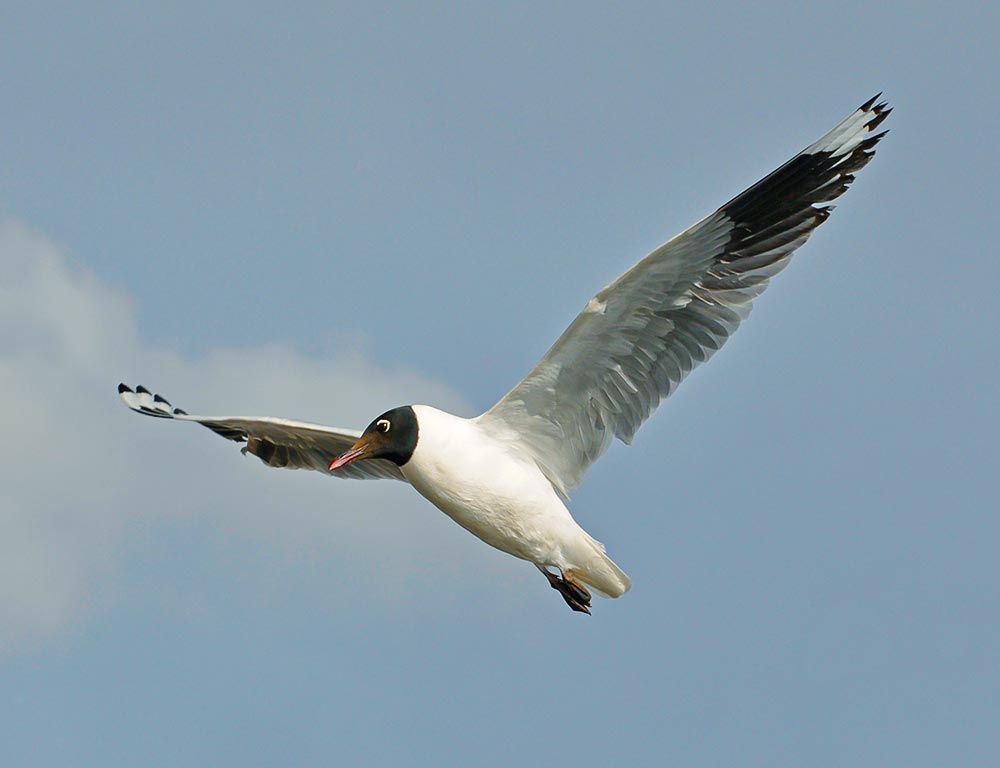
The Andean gull is a species of gull belonging to the subfamily Larinae, part of the family Laridae. Laridae is a family of aquatic birds that includes gulls, terns, and skimmers. This species of gull can be found in Argentina, Bolivia, Chile, Colombia, Ecuador, and Peru.
These countries are all located in the Andes mountain range, which is where the Andean gull gets its name from. The Andean gull is a medium-sized bird, measuring around 40–45 cm in length and weighing between 170–440 g.
Its head, neck, and underparts are white, while the upperparts are grey. It also has a black bill and legs, as well as black wing tips.
Its diet consists of insects, crustaceans, small fish, and other small invertebrates. The Andean gull is a resident breeder in the high Andes of South America, and is generally found at altitudes of 3,000–5,000 m. It nests in colonies on rocky cliffs and islands.
It is an uncommon species, with a population estimated at between 10,000 and 25,000 individuals. Its conservation status is classified as ‘Near Threatened’ by the IUCN.
| Kingdom | Animalia |
| Phylum | Chordata |
| Class | Aves |
| Order | Charadriiformes |
| Family | Laridae |
| Genus | Chroicocephalus |
| Species | C. serranus |
5. Plumbeous Rail
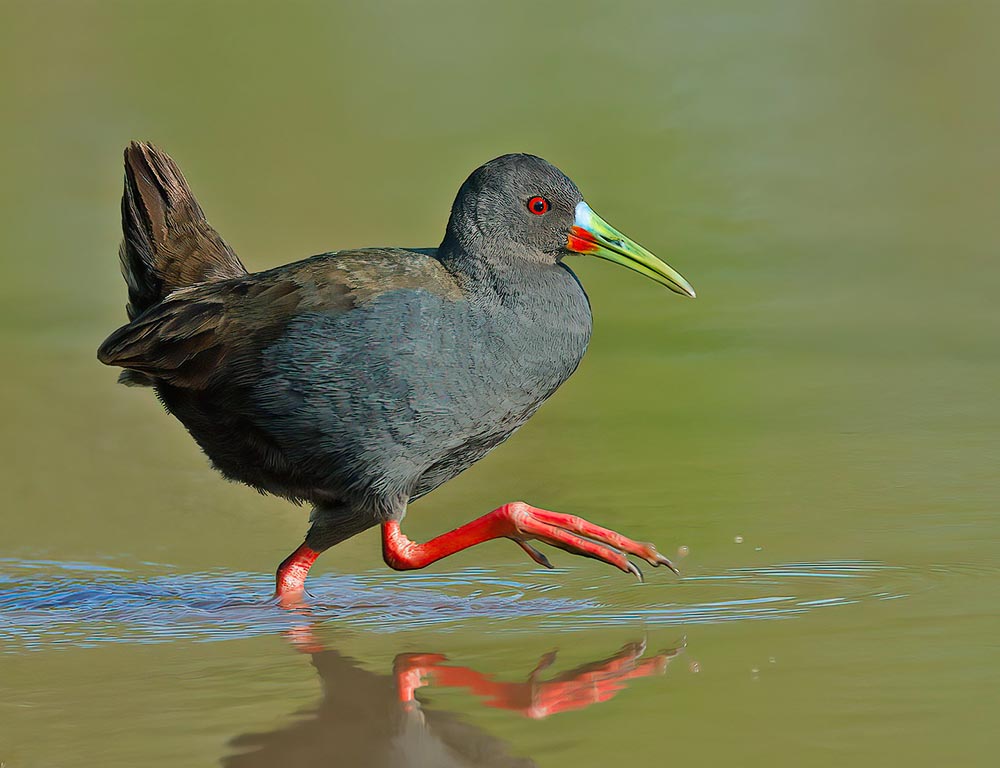
The plumbeous rail (Rallina plumbea) is a species of bird belonging to the subfamily Rallinae of the rail, crake, and coot family Rallidae. It is a relatively small rail, measuring between 28 and 30 cm in length.
The plumbeous rail has a slate-gray head, neck, and breast, and dark olive-brown upperparts. It has a white line down the middle of the face and a white eye ring.
Its bill is long and slightly down-curved, while its legs are dark gray. This species is native to several countries in South America, including Argentina, Bolivia, Brazil, Chile, Ecuador, Paraguay, Peru, and Uruguay.
It is generally found in wetlands, such as marshes, ponds, and rivers, as well as in grasslands, savannas, and shrublands. The plumbeous rail mainly feeds on aquatic insects, crustaceans, and other invertebrates, which it captures from the water’s surface.
It also eats some seeds and fruits. The plumbeous rail is a shy and secretive species, and they are difficult to observe in the wild. However, they can be found in a variety of habitats, from wetlands to grasslands and savannas.
They are known to be quite vocal, with a variety of different calls. The plumbeous rail is considered to be of least concern in terms of conservation status, as it has a large range and is not currently facing any major threats.
| Kingdom | Animalia |
| Phylum | Chordata |
| Class | Aves |
| Order | Gruiformes |
| Family | Rallidae |
| Genus | Pardirallus |
| Species | P. sanguinolentus |
6. Rusty-fronted Canastero
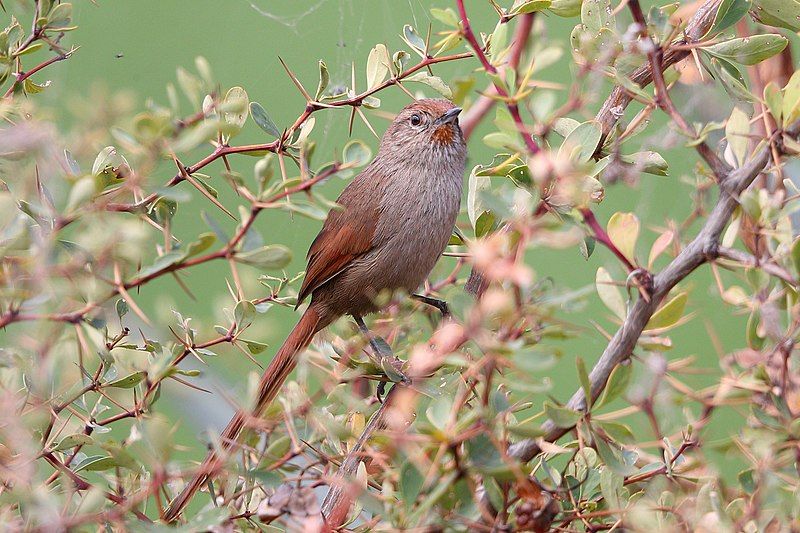
The Rusty-fronted Canastero is a unique species of bird belonging to the family Furnariidae. This species is native to Peru and is not found anywhere else in the world.
It inhabits two distinct habitats – the subtropical and tropical moist montane forest and the subtropical and tropical high-altitude shrubland. These habitats are characterized by their lush vegetation and relatively high altitude.
The montane forest is often found in the higher mountains of Peru, while the high-altitude shrubland is found at lower elevations. The Rusty-fronted Canastero is a highly adaptable bird species and is able to survive in a variety of habitats.
It is often found in open scrublands and grasslands, as well as in the forest understory. It prefers to stay close to the ground and rarely flies very high.
It feeds mainly on insects, fruits, and seeds. The Rusty-fronted Canastero is an important species to the region, as it helps to maintain the health of the environment. It helps to disperse seeds and pollinate plants, aiding in the regeneration of forests and other ecosystems.
It is also an important food source for other wildlife species, such as raptors, which rely on it for sustenance. The Rusty-fronted Canastero is considered to be near threatened, due to its declining population size.
This is largely due to the destruction of its natural habitat by logging and other human activities. Conservation efforts are being made to protect this species and its habitat.
| Kingdom | Animalia |
| Phylum | Chordata |
| Class | Aves |
| Order | Passeriformes |
| Family | Furnariidae |
| Genus | Asthenes |
| Species | A. ottonis |
7. Andean Negrito
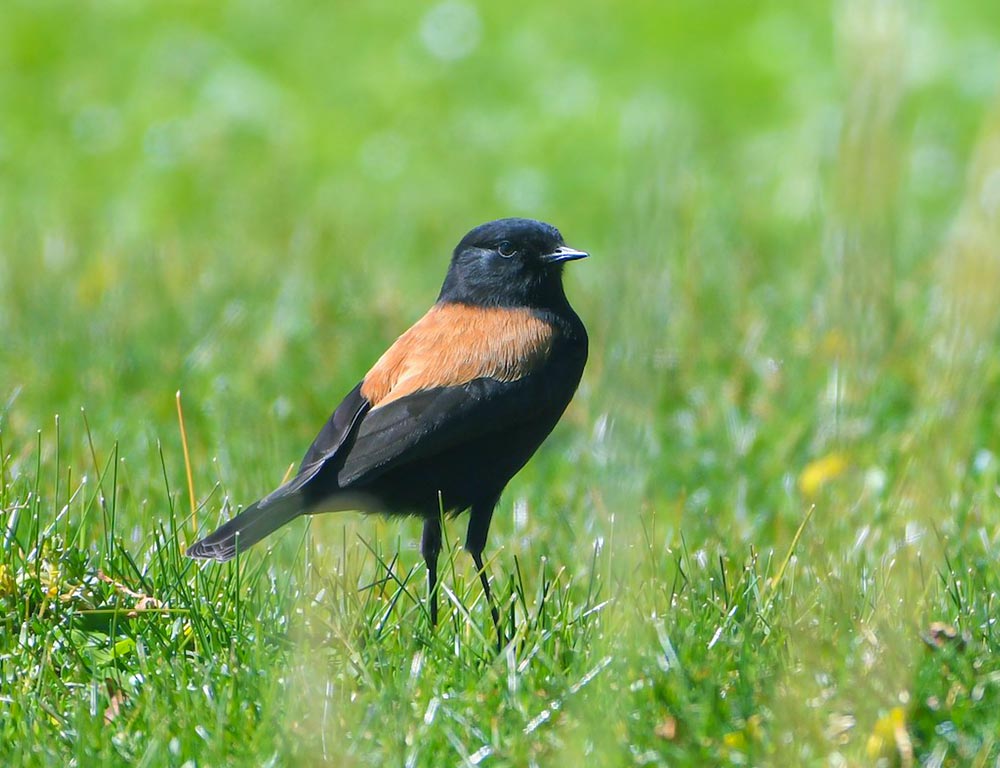
The Andean Negrito is a species of bird belonging to the family Tyrannidae, which is often referred to as the tyrant-flycatcher family.
It is native to the Andes mountain range in South America and is closely related to, and for many years was thought to be the same species as, the Austral Negrito, which is found in southern South America. This species is monotypic, meaning that it has no subspecies.
This is an important piece of information that distinguishes it from its close relative, the Austral Negrito, which has several subspecies.
The Andean Negrito is a medium-sized bird, measuring approximately 11–12 cm in length, and is mainly grayish-brown in color with a white throat and a white eyebrow stripe. It is commonly found in shrubby habitats and is often seen perching on low branches or the ground.
Its diet consists mainly of insects and other small invertebrates, which it catches in flight.
| Kingdom | Animalia |
| Phylum | Chordata |
| Class | Aves |
| Order | Passeriformes |
| Family | Tyrannidae |
| Genus | Lessonia |
| Species | L. oreas |
8. Rufous-naped Ground Tyrant
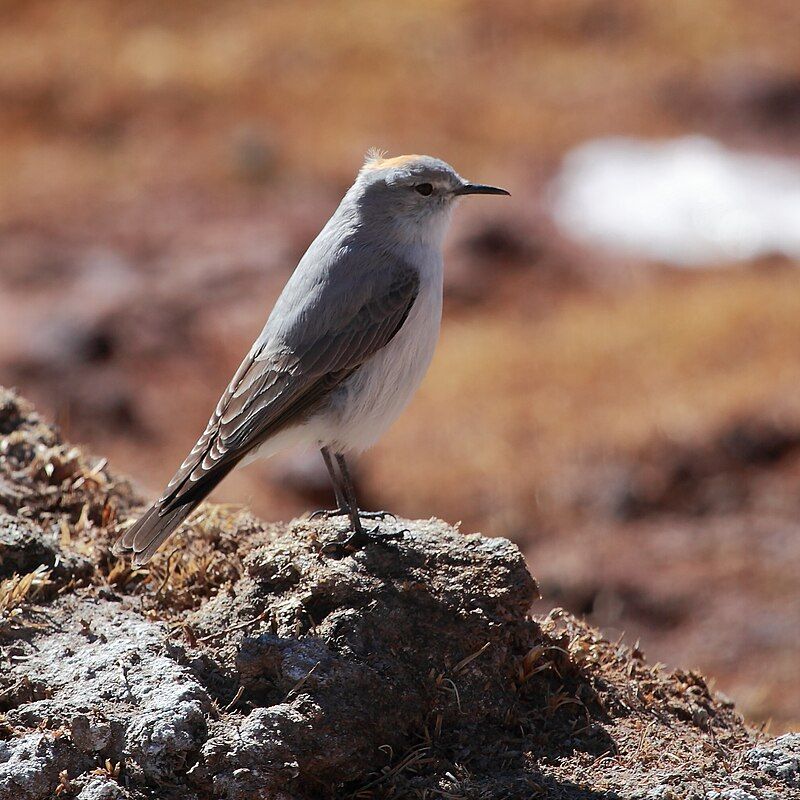
The rufous-naped ground tyrant is a species of bird in the Tyrannidae family, commonly found across South America in Argentina, Bolivia, Chile, and Peru.
This bird typically inhabits subtropical or tropical high-altitude shrubland and grassland areas, where it can take shelter and find food.
Rufous-naped ground tyrants are well-adapted to living in rugged terrain, allowing them to navigate mountainous regions quite easily.
They typically feed on insects, spiders, and other small invertebrates. In addition, they sometimes consume small fruits and berries.
This species of bird is known to migrate over long distances, sometimes traveling thousands of miles between its breeding and wintering habitat.
As a result, it has become an important part of the ecosystem of the countries in which it resides, providing important pollination and seed dispersal services.
| Kingdom | Animalia |
| Phylum | Chordata |
| Class | Aves |
| Order | Passeriformes |
| Family | Tyrannidae |
| Genus | Muscisaxicola |
| Species | M. rufivertex |
9. Yellow-billed Pintail
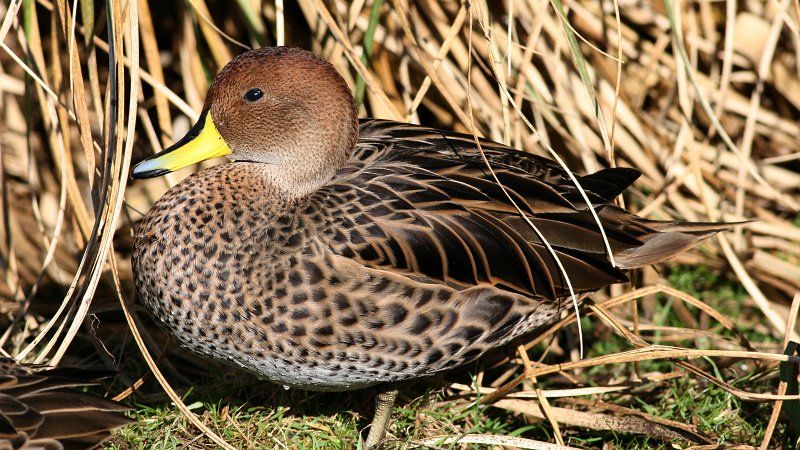
The yellow-billed pintail is a species of dabbling duck found in South America. It is part of the genus Anas, which includes many species of ducks, geese, and swans. This species is further divided into three subspecies, each with its unique characteristics.
The first subspecies, Anas georgica, is found in the Caribbean and northern South America and is characterized by its yellow-billed and yellow-footed appearance.
The second subspecies, Anas flavirostris, is found in central and southern South America and has a brown bill and feet. The third subspecies, Anas versicolor, is found in Argentina and has an orange-billed and green-footed appearance.
All three subspecies share a common body shape, with a long and slender neck, short legs, and a long, pointed tail. They also have a streamlined body, making them great swimmers and efficient hunters.
They spend most of their time on the water, but can also be seen flying in flocks around marshes and other wetlands.
The yellow-billed pintail is an important species in South American ecosystems, as it helps to control populations of aquatic insects, and provides food for larger fish and birds.
| Kingdom | Animalia |
| Phylum | Chordata |
| Class | Aves |
| Order | Anseriformes |
| Family | Anatidae |
| Genus | Anas |
| Species | A. georgica |
10. Shining Sunbeam
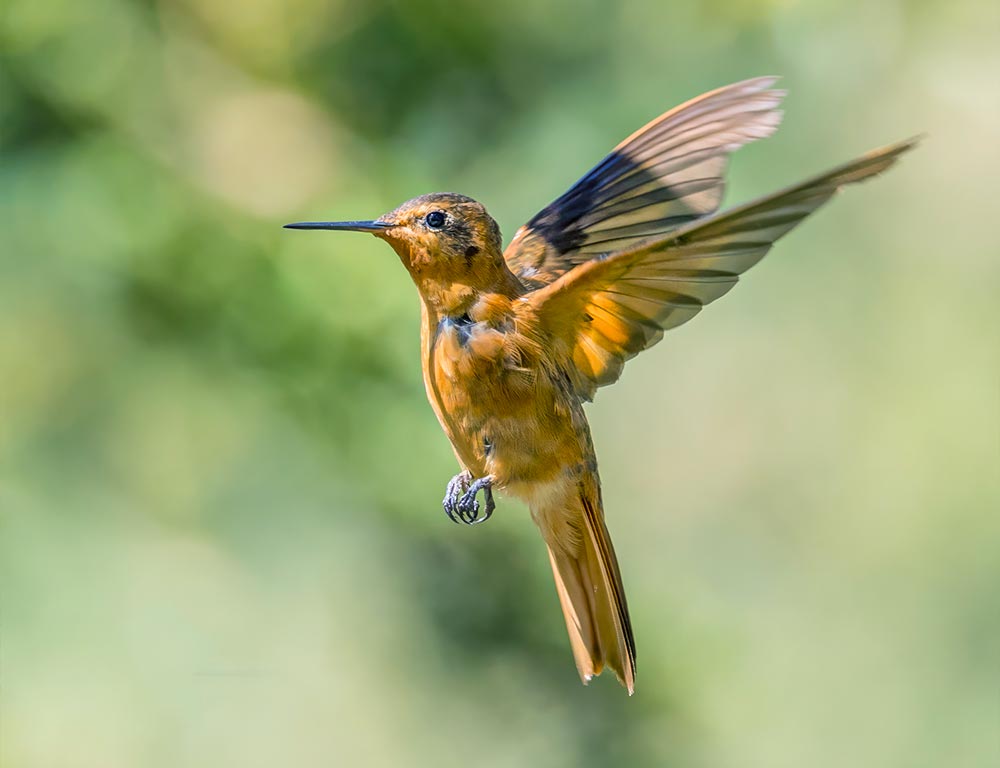
The Shining Sunbeam is a species of hummingbird, belonging to the “brilliants” tribe Heliantheini, which is part of the subfamily Lesbiinae.
It is native to Colombia, Ecuador, and Peru where it is found in various habitats, from open grassland and scrub to high-altitude cloud forests. It is a small hummingbird with a length of about 4 inches and a wingspan of about 2 inches.
It has a white throat and a pale yellow belly, and its wings are black and white with a greenish-yellow band on the outer edges. Its bill is black and it has a short tail that is black and white.
The Shining Sunbeam feeds on nectar from flowers, as well as small insects and spiders. Its diet is supplemented by drinking the sap of trees. It is a solitary bird and is often seen hovering around flowers, waiting for insects to appear.
The Shining Sunbeam is an important pollinator in its native range, as it helps to spread the pollen from one flower to the next.
| Kingdom | Animalia |
| Phylum | Chordata |
| Class | Aves |
| Clade | Strisores |
| Order | Apodiformes |
| Family | Trochilidae |
| Genus | Aglaeactis |
| Species | A. cupripennis |
Conclusion
Birds are an important part of the Cusco landscape, providing beauty and an important ecological balance.
From the majestic Andean Condor soaring above the mountains to the endemic species like the Bearded Mountaineer to the tiny hummingbirds that fill the skies, there is an incredible variety of birds to be found in Cusco.
For bird-watching enthusiasts, Cusco is a paradise, offering a chance to see some of the world’s most unique and diverse avian species.